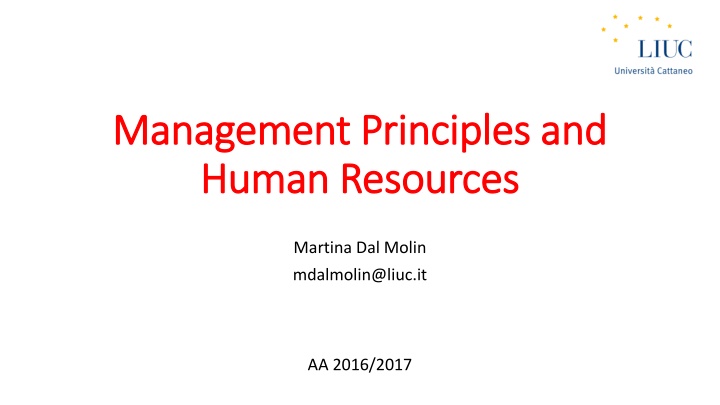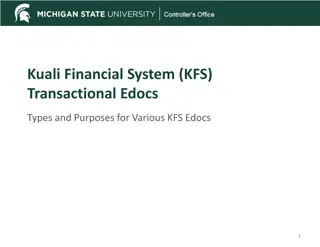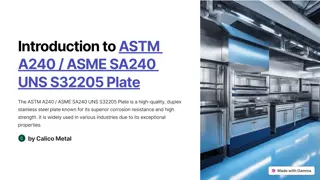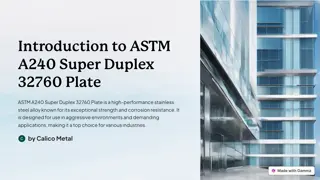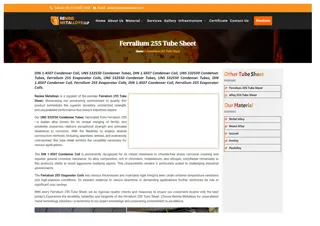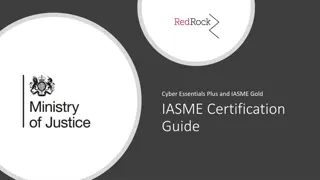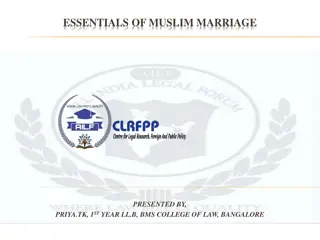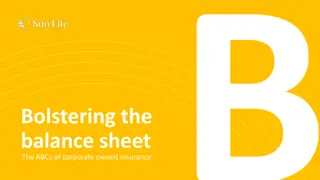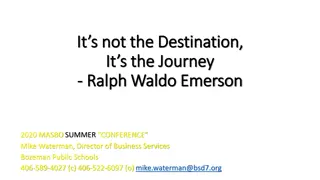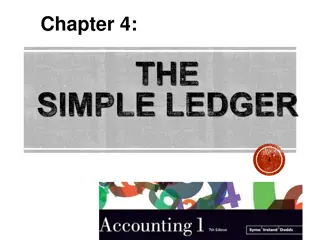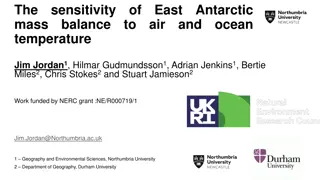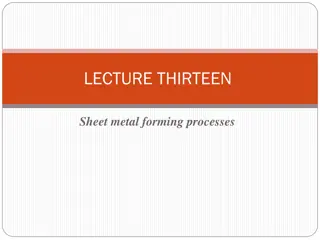Management Principles & Balance Sheet Essentials
The content covers management principles, human resources, the basics of the balance sheet, and an introduction to assets, liabilities, and shareholder equity. It explains the components of a balance sheet, including assets, liabilities, and shareholders' equity, with a focus on understanding the financial position of a company. The balance sheet principles are illustrated with images for better comprehension.
Download Presentation

Please find below an Image/Link to download the presentation.
The content on the website is provided AS IS for your information and personal use only. It may not be sold, licensed, or shared on other websites without obtaining consent from the author.If you encounter any issues during the download, it is possible that the publisher has removed the file from their server.
You are allowed to download the files provided on this website for personal or commercial use, subject to the condition that they are used lawfully. All files are the property of their respective owners.
The content on the website is provided AS IS for your information and personal use only. It may not be sold, licensed, or shared on other websites without obtaining consent from the author.
E N D
Presentation Transcript
Management Management Principles Human Human Resources Principles and Resources and Martina Dal Molin mdalmolin@liuc.it AA 2016/2017
Agenda Agenda Assets Liabilities AA 2016/2017 2
INTRODUCTION INTRODUCTION
The Balance The Balance Sheet Sheet (1/5) (1/5) It provides a financial picture of the company in a specific moment of time (t) It shows what the company owns and what it owes It is composed by two opposite parts 4
The Balance The Balance Sheet Sheet (2/5) (2/5) It is composed by two opposite parts: oASSETS, always presented first oSHAREHOLDERS EQUITY and LIABILITIES In the standard accounting model we have: ASSETS = SHAREHOLDERS EQUITY + LIABILITIES Indeed, from an economic point of view, each euro (or dollar, ..) of assets MUST be funded by a dollar of liabilities or equity Reported assets, liabilities and equity are subdivided into line items or groups of similar account having a monetary amount 5
The Balance The Balance Sheet Sheet (3/5) (3/5) ASSETS = SHAREHOLDERS EQUITY + LIABILITIES SHAREHOLDERS EQUITY = ASSETS - LIABILITIES E1 = A1 L1 R2 = Revenues C2 = Costs E2 = Equity E2 = R2 C2 E2 E1 = R2 C2 E2 = E1 + R2 C2 6
The Balance The Balance Sheet Sheet (4/5) (4/5) ASSETS SECTION It includes all the goods and property owned by the company and uncollected amount due to the companies from others SHAREHOLDERS EQUITY SECTION It represents the shareholders ownership interest in the company (i.e. what the company s assets would be worth after all claims upon those assets were paid) LIABILITIES SECTION It includes all debts and amount payables to other parties 7
Understanding Understanding the the basic basic logic logic The story of Mr. Smith 9
THE BALANCE SHEET: ASSETS THE BALANCE SHEET: ASSETS
Assets Assets: : basic basic model (1/2) model (1/2) Assets represent the monetary value of the resources owned by the company: oTechnological and financial resources oHuman resources and resources related to the company s image The economic value represents the expected cash flow related to the use of such resources The assest side of the BS reports only the resources that can be expressed with a monetary value 11
Assets Assets: : basic basic model (2/2) model (2/2) Resources are organized and presented according to their temporal usability with respect to the operational cycle of the company (in general 12 months): oNon current assets usability < 12 months oCurrent assets usability > 12 months oDiscontinuing operations usability = 0 12
How to account for How to account for assets assets? ? Criteria used to account for assets generally are: oAcquisition cost oFair value oValue in use 13
Acquisition Acquisition cost cost 1) Price payed by the company to buy the resource (or to have the benefits related to the use of the resource) E.g. the price payed by the company to buy a production plant 2) Cost sustained by the company to develop/produce the resource E.g. the economic value of the inputs used to develop a specific plant 14
Fair Fair value value 1) Price following which the resource could be exchange and sold on the market E.g. the willingness to pay of the company A to buy a plant of the company B Fair value reflects objective values determined outside the company and linked the market value of that resource 15
Value in use Value in use Value of the financial flows for the company that are related to the use of the resources E.g. for a specific equipment that produces the good x, the value in use of that equipment is represented by the flow of costs and revenues related to the production of x. 16
Asstes Asstes side of the BS: the model side of the BS: the model NON CURRENT ASSETS/FIXED ASSETS Property, Plant and Equipment Investment properties Start-up and intangible activities with indefinite useful life Holdings Other financial activities CURRENT ASSETS Receivable (commercial credits) Inventories Work in progress on ordination Current financial activities Cash DISCONTINUIUNG OPERATIONS 17
Property Property, , Plant The item refers to the goods owned by the company, that are tangible and that have a durable use and that are used by the company to produce profit Some examples: oProduction plants oAdministrative buildings, industrial areas oLands used by the company to carry out its own activities oShips, aircrafts oEquipment, facilities Plant and and Equipment Equipment: : description description 18
Property Property, , Plant The item refers to the goods owned by the company, that are tangible and that have a durable use and that are used by the company to produce profit Some examples: oProduction plants oAdministrative buildings, industrial areas oLands used by the company to carry out its own activities oShips, aircrafts oEquipment, facilities Plant and and Equipment Equipment: : description description 19
Property Property, , Plant Plant and and Equipment Equipment: : accounting accounting Initial Value: acquisition cost, therefore: Price payed by the company to buy the good Cost for the development of the good Value after: two criteria for the evaluation Cost less depreciation Fair value 20
Property Property, , Plant Plant and and Equipment Equipment: VALUE : VALUE after after (1) (1) COST LESS DEPRECIATION With respect to goods that have a durable useful life, a depreciation must be calculated DEPRECIATION It refers to the amount of the acquisition cost that must be reduced (from the initial acquisition cost) after the use of the good It is an accounting convention that allows a company to write-off the value of an asset over time It is considered a non-cash transaction 21
Property Property, , Plant Plant and and Equipment Equipment: VALUE : VALUE after after (1) (1) HOW TO CALCULATE THE DEPRECIATION We need (for the good x): Acquisition cost Residual value Useful life DEPRECIATION = (ACQUISITION COST RESIDUAL VALUE) / USEFUL LIFE VALUE of the GOOD X Value Good x (t) = ACQUISITION COSTS - DEPRECIATION ( 0 t) 22
Property Property, , Plant Plant and and Equipment Equipment: VALUE : VALUE after after (1) (1) Ever year, the BS reports the acquisition cost less depreciation Example Plant bought 31/12/2011, 1.000 k Useful life: 5 years Residual value: 200 k Depreciation = (1.000 200)/5 = 160 2011 2012 2013 2014 2015 2016 2017 Value 1.000 840 680 520 360 200 0 Deprec. 0 160 160 160 160 160 23
Property Property, , Plant Plant and and Equipment Equipment: VALUE : VALUE after after (1) (1) FAIR VALUE Every year, the value reported is the fair value, i.e. the current value on the market The fair value is then compared with the expected value of the good (on the BS) and: oFair value > expected value = re-evaluation (value of the good ) oFair value < expected value = write-down (value of the good ) In both cases, the depreciation must be re-calculated The changed value of the good should be accounted in the reserve of the BS (liabilities) 24
Property Property, , Plant Plant and and Equipment Equipment: VALUE : VALUE after after (2) (2) FAIR VALUE Example: A plant was bought on the 31/12/2001 (useful life 30 years) for a price of 300.000 In 2006, the fair value of the good is 275.000 (initial value in 2006: 250.000) How to account for this change and what is the value of the good? 25
Property Property, , Plant Plant and and Equipment Equipment: VALUE FAIR VALUEExample: : VALUE after after (1) (1) 1) Increase of 25.000 (275.000 250.000) in Property, Plant and Equipment 2) Increase of 25.000 in Revaluation Reserve 3) Calculate the depreciation Depreciation= 275.000/25 years = 11.000 The value of the good (in 2016) is 264.000 Depreciation Property, Reserve 26
Property Property, , Plant test (1/2) test (1/2) Plant and and Equipment Equipment: : Impairment Impairment It is implemented to verify possible durable loss of value and to identify the possible how much of the recoverable amount of the asset Recoverable amount = max (fair value charges to the sale; usable value) To account for, we should chose the minimum value between the linear model and the value in use 27
Property Property, , Plant test (2/2) test (2/2) Plant and and Equipment Equipment: : Impairment Impairment Example: consider three different e valuations for three equipments Evaluation Equipment 1 Equipment 2 Equipment 3 Linear model 840 520 200 Fai value 500 300 300 Usable value 400 400 400 Linear model 840 520 200 Max (fair value; usable value) 500 400 400 Accounting Min [linear model; max (fair value; usable value)] 500 400 200 28
Investment Investment properties The item refers to the properties of the company, owned to receive the payment of a rent. It refers, therefore, to all the properties that are not used for the core activities of the company Some examples: oLands for investments oBuildings of the company, but rent to third parties to receive Concept of oFinancial leasing oOperational leasing properties: : description description 29
Investment Investment properties properties: : accounting accounting Initial Value: acquisition cost, therefore: Price payed Cost Value after: two criteria for the evaluation Fair value Cost less depreciation 30
Investment Investment properties properties: VALUE : VALUE after after FAIR VALUE Every year, the value of the property = fair value We do not have to calculate the depreciation Changes in the fair value are accounted as revenue or cost following the accrual accounting principle No impairment test COST Every year, the value of the property = acquisition cost depreciation But the depreciation has not to be calculated Therefore the impairment test is necessary 31
Start Start- -up and up and intangible intangible activities activities: : description description It refers to intangible goods, controlled by the company, that are able to produce future revenues BRANDS PATENTS and LICENSES 32
Start Start- -up and up and intangible intangible activities activities: : description description Depending on their lives, intangibles can be distinguished in two categories: oIntangible with indefinite life (e.g. brands) oIntangible with definite life (e.g. cost products development) 33
Intangible Intangible: Start : Start- -up and up and goodwill goodwill It refers to: oBusiness Corporation oIt represents the potential increases of the company s financial flows INITIAL VALUE oDifference between the acquisition cost and the current value of assets and liabilities when the transaction occurred: Positive value assets Negative value cost (accrual accounting) AFTER VALUE oDepreciation has not to be calculated BUT oThe Impairment test has to be done once a year oLosses of value should be accounted as cost (accrual accounting) 34
Intangible Intangible: Brands : Brands INITIAL VALUE oModel of cost, therefore: Price payed to use the resource (the brand) Cost of the inside production AFTER VALUE oDepreciation has not to be calculated BUT oThe Impairment test has to be done once a year oLosses of value should be accounted as cost (accrual accounting) 35
Intangible Intangible: : Costs Costs of of development development It refers to: oCost related to internal design and production oCost related to external design and production oOverhead related to project INITIAL VALUE oModel of cost, therefore: Price payed to use the resource (the brand) Cost of the inside production AFTER VALUE oDefined life: acquisition cost less depreciation oIndefinite life: impairment test 36
Holdings Holdings: : description description The item refers to the share owned by the company with respect to other companies ( = the company is a shareholder of other companies) Other companies: oControlled companies oLinked companies oJoint ventures Control: oWhen the company A has, directly or indirectly, more than 50% of the votes in the general assembly of the company B oWhen the company A, although it doesn t have more than 50% of votes has a relevant power with respect to B of D 37
Holdings Holdings: : accounting accounting Initial Value: acquisition cost, that, in this case is equal to the fair value + transaction costs Value after: oFair value oCost 38
Other Other financial financial activities The item refers, in general, to equity instruments Securities and financial instruments, i.e. every contract between two companies that represents: oA financial asset for the company A oA financial liability for the company B INITIAL VALUE oAcquisition costs IMPAIRMENT TEST oMandatory oLosses are accounted in the Income Statement activities: : description description 39
Asstes Asstes side of the BS: the model side of the BS: the model NON CURRENT ASSETS/FIXED ASSETS Property, Plant and Equipment Investment properties Start-up and intangible activities with indefinite useful life Holdings Other financial activities CURRENT ASSETS Receivable (commercial credits) Inventories Work in progress on ordination Current financial activities Cash and cash equivalent DISCONTINUIUNG OPERATIONS 40
Receivables Receivables: : description The item refers, in general, to commercial credits that are accounted according to expected value oh having the credits Difference between the nominal value of the credit and the expected loss INITIAL VALUE oAcquisition costs IMPAIRMENT TEST oTo be executed periodically description 41
Inventories Inventories: : description The item refers to: Finished goods that will be sell on the market Raw material that will be used to produce finished goods INITIAL VALUE oWe have to choose the lower value between: Acquisition cost Net value to realize the good oIf there is a de-evaluation of inventories, the related loss of value represent a cost (accrual accounting Income Statement) description 42
Inventories Inventories: : accounting accounting ACQUISITION COST All the cost related to the production of the good are considered here Two method could be applied: oFIFO method (First In; First Out) oAverage weighted Cost: every unit of the goods are bought at the same price NET VALUE oEstimate sale price - (cost to finish the good + estimated cost of sale) 43
WIP on WIP on ordination ordination: : description description and account and account The item refers to a contract put in place to develop a product or a set interrelated set of goods (for their design, production and technology) To account for this WIP, it is necessary to define the State of Progress, through one of the three methods: oCosts oDelivered units oPhysical measurement 44
Current Current financial financial activities account account The item refers to financial assets (e.g. obligations) that are owned to be negotiated or to be sold INITIAL AND AFTER VALUE Fair value Changes of the value should be accounted as: Profit or loss (accrual accounting) The same amount of money should be balanced on the item Reserve (liabilities) activities: : description description and and 45
Cash: Cash: description description and account and account The item refers to: Cash financial assets payable in a short time period Current account INITIAL AND AFTER VALUE Current monetary value 46
Asstes Asstes side of the BS: the model side of the BS: the model NON CURRENT ASSETS/FIXED ASSETS Property, Plant and Equipment Investment properties Start-up and intangible activities with indefinite useful life Holdings Other financial activities CURRENT ASSETS Receivable (commercial credits) Inventories Work in progress on ordination Current financial activities Cash DISCONTINUIUNG OPERATIONS 47
Discontinuing Discontinuing operations account account operations: : description description and and The item refers to a heterogeneous item in which we can find all the activities that are going to finish or that have been sold before the end of the accounting year, but before the definition of the BS Each item should be accounted following its specific rules, but the depreciation has not to be calculated 48
THE BALANCE SHEET: THE BALANCE SHEET: LIABILITIES LIABILITIES
The Balance The Balance Sheet Sheet It provides a financial picture of the company in a specific moment of time (t) It shows what the company owns and what it owes It is composed by two opposite parts 50
